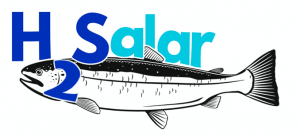Work Package 3
Impacts of acute and chronic H2S exposure on metabolism, welfare and production performance
Leader: DTU – Peter Vilhelm Skov
H2S exerts a toxic effect on fish through the inhibition of oxidative phosphorylation, leading to failure of the proton transport across the mitochondrial membrane and impairing the proton-driven ATP synthase. Long-term consequences of H2S depend on exposure levels and duration, and fish may either recover, suffer long-term neuron and motor damage, or ultimately death.
A second mechanism by which H2S exerts an effect is in the interaction between oxygen and H2S; fish sense oxygen by neuroendothelial cells on the gill arches, in which endogenous production of H2S is rapidly oxidised by oxygen. High H2S levels (caused by lack of oxygen or high H2S in the environment) cause fish to initiate a series of physiological response to safeguard systemic and myocardial oxygen delivery. Avoidance may lead to progressively erratic behavior in the production system.
WP3 aims to elucidate the effects of acute and chronic exposure to H2S on the metabolism, welfare and performance of salmon post-smolts.

